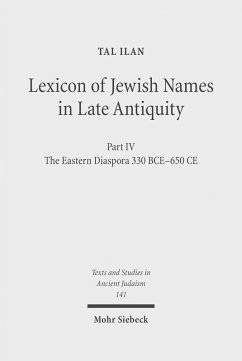In this lexicon, Tal Ilan collects all the information on names of Jews in lands east of Palestine, in which Aramaic and Arabic was spoken, and on the people who bore them between 330 BCE, a date which marks the Hellenistic conquest of East, and 650 CE, approximately the date when the Muslim conquest of East and the southern Mediterranean basin was completed. The corpus includes names from literary sources, especially the Babylonian Talmud but those mentioned in epigraphic documents, especially incantation bowls in Aramaicare, are also an important factor of the database. This lexicon is an onomasticon in as far as it is a collection of all the recorded names used by the Jews of the eastern Diaspora in the above-mentioned period. Tal Ilan discusses the provenance of the names and explains them etymologically, given the many possible sources of influence for the names at that time. In addition, she shows the division between the use of biblical names and the use of foreign names, and points out the most popular ones. This book is also a prosopography, since Ilan analyzes the identity of the persons mentioned therein. The lexicon is accompanied by a lengthy and comprehensive introduction that scrutinizes the main trends in name giving current at the time. A large part of it is devoted to the question of how one can identify a Jew in a mostly non-Jewish society. Born 1956; 1991 PhD on Jewish Women in Greco-Roman Palestine at the Hebrew University in Jerusalem; 2003-22 Professor for Jewish Studies at the Freie Universität, Berlin; 2022 retired; since 2008 she is the editor of the Feminist Commentary on the Mishnah and the Babylonian Talmud (FCBT).
Dieser Download kann aus rechtlichen Gründen nur mit Rechnungsadresse in A, B, BG, CY, CZ, D, DK, EW, E, FIN, F, GR, HR, H, IRL, I, LT, L, LR, M, NL, PL, P, R, S, SLO, SK ausgeliefert werden.

